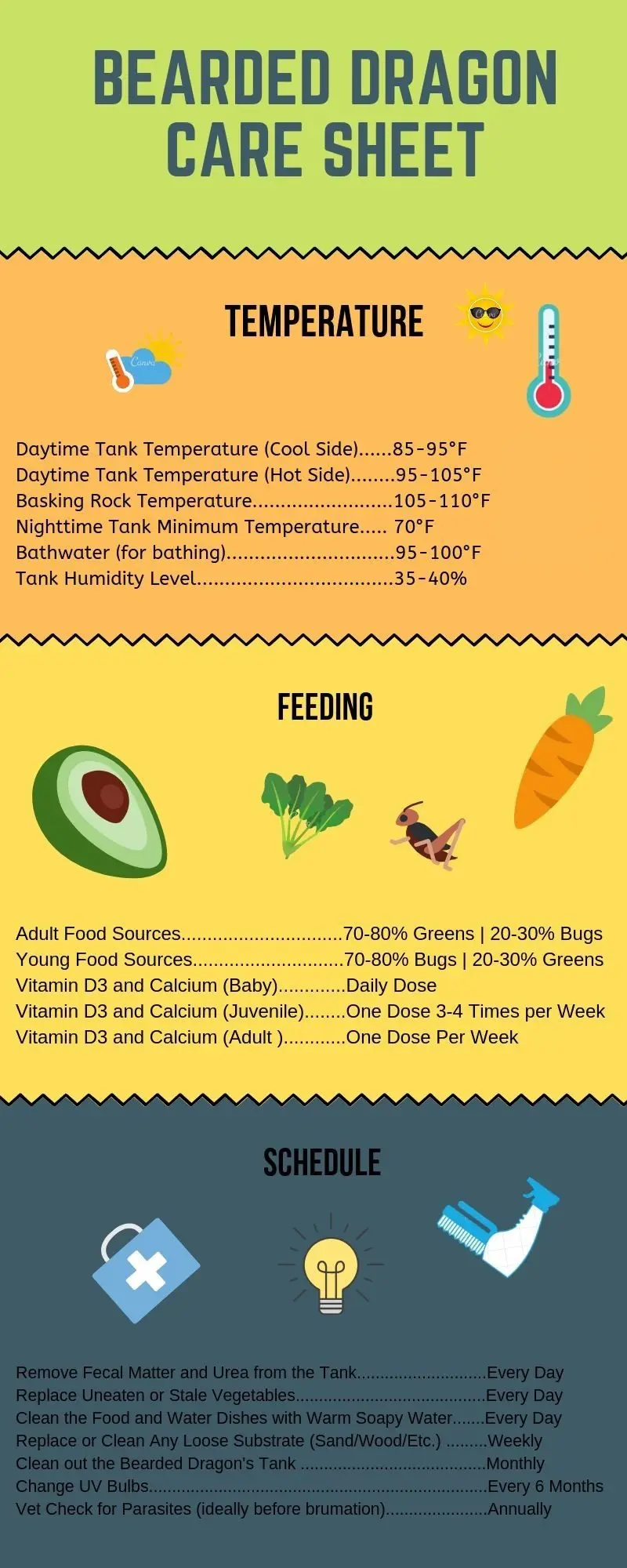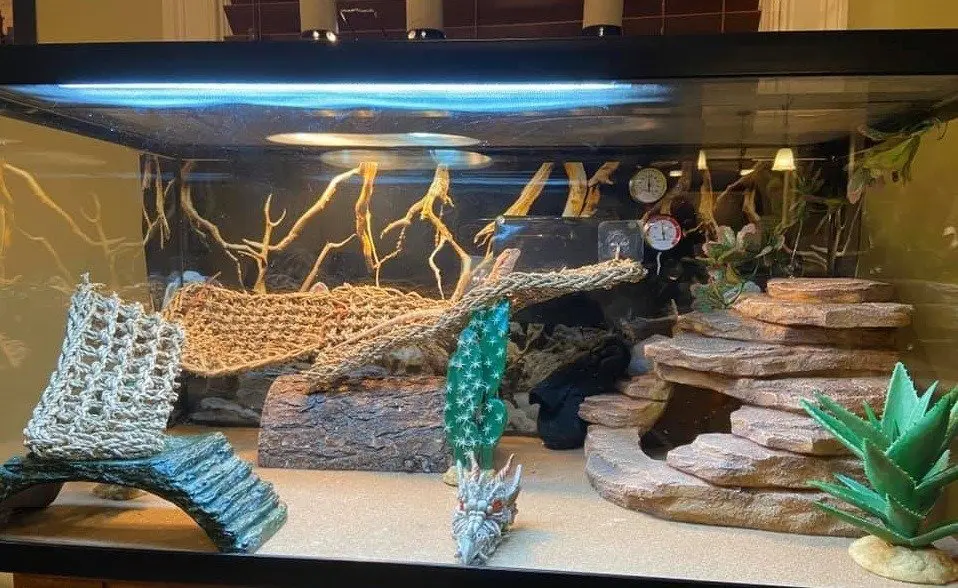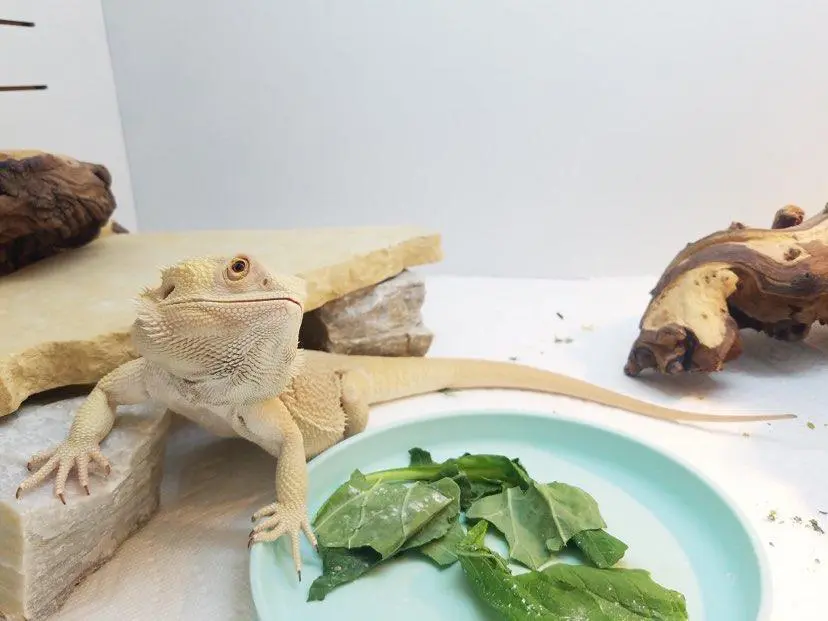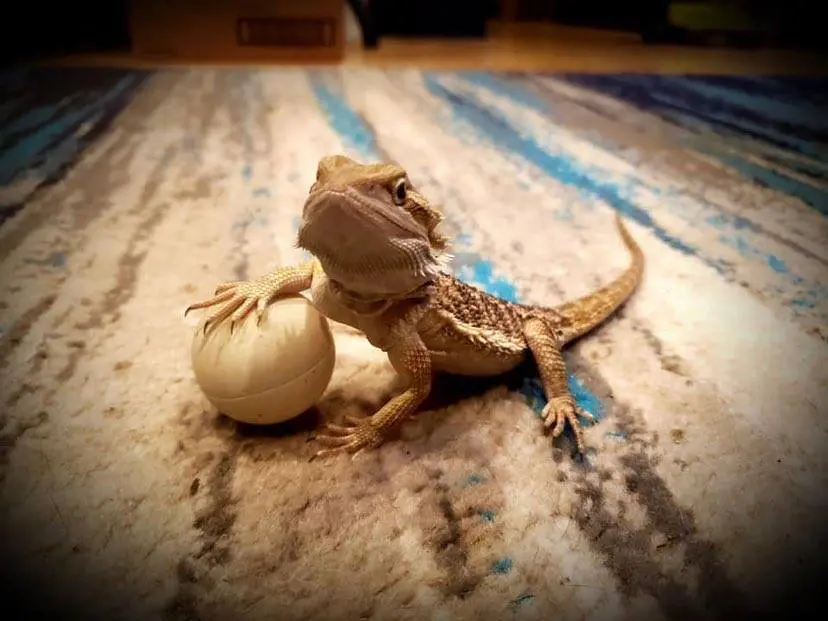Keeping a bearded dragon as a pet means that you need to pay close attention when designing their habitat to ensure you provide them with a natural environment where they can thrive. Bearded dragons have very specific care requirements.
As with any pet, you want to ensure you provide your pet with the best care to keep them fit and healthy in the long run.
By duplicating their natural habitat, you can have a healthier and happier bearded dragon. Remember that a dragon can live up to ten years, so ensuring you have everything to get your tank setup before you bring your beardie home will ensure the best results.

Enclosures
Bearded dragons grow exceptionally fast in their first year, which means you should be focusing on a tank that is no smaller than forty gallons.
The ideal size is 48” x 24” x 24”. The ideal enclosure will be made of glass or wood. A wire cage is not the right solution, as it will not retain the heat.
Hatchings can manage in a tank up to fifteen gallons, but they will need to be moved to at least a forty-gallon tank for their adulthood. A simple design will be much easier to clean.
Further reading:
Substrate
Substrate is essential to your dragon’s health and well-being. There are numerous options on the market, some are considered good options, others not so much.
Good substrates
The best substrate recommended for bearded dragons is reptile carpet, which can be purchased from reptile specialists.
This is an artificial substrate that is manufactured to look like real desert grass. The carpet is visually appealing and can cover the floor of the tank. It is soft to the touch and easy to clean. The reptile carpet offers excellent absorbency and can be used on all tank sizes.
Bad substrates
There are numerous substrates that you can use, but sand is one of the most dangerous of them all.
While it can be a visual addition to your tank and be a natural option, it is also the most dangerous for bearded dragons, because it can cause impaction.
Sand is also heavy, but this affordable substrate also naturally encourages burrowing and digging. Definitely not recommended with younger bearded dragons.
Further reading:
Lighting And Temperature
UV Lighting
UVB lighting is very important to your bearded dragons overall healthy. Your dragon lives in your home and doesn’t have access to direct sunlight that it relies on daily. Your UV lighting should run for at least twelve hours per day.
A timer to maintain the timing is preferred, so you can switch them on for twelve hours and turn them off for twelve hours at night.
UVA is imperative to keep your bearded dragon healthy and stimulated, it also helps to improve appetite. UVB on the other hand, is essential to help the bearded dragon metabolize vitamin D3 and calcium.
T8 or T5 fluorescent tube are recommend for UV lighting. Ensure when making your selection that the bulb is two thirds of the enclosure length, this way your dragon is assured to get the UV rays it needs.
Further reading:
Heating

The heat lamp is needed to provide warmth and keep your dragon happy and healthy. Halogen flood lights have also proven effective in providing the essential heat your dragon needs. Your focus should be to provide your beardie with the heat they would get in their natural habitat, which is as follows:
Basking area – 90 – 105ºF (35-40ºC)
Cooler side – 77-85ºF (25-29ºC)
Night temperatures – 55-75ºF (12-24ºC)
Your heat lamp should also run twelve hours per day. If the habitat tends to run significantly cooler than needed when the lights are turned off, then you should consider other heating sources, which can include ceramic heat emitters and heat mats.
Further reading:
Monitoring
In addition to your lighting, you will want two thermometers, this will enable you to monitor the temperatures on the warm and cool side of the tank.
It is also recommended you have a humidity gauge to ensure your dragon isn’t exposed to high humidity levels and that the humidity within the tank remains at between thirty-five and forty percent.
Supplements
Living in captivity, your bearded dragon will require supplements to ensure that they remain healthy, helping them live a long and happy life. Even though your dragon has probably been born in captivity, you will still need to focus on some important supplements, this includes:
Vitamin D3 And Calcium
These are the most important vitamins and minerals you are going to have to supplement in your beardie’s diet. Calcium is essential to effective bone development.
Vitamin D3 and Calcium can be given at the same time as dragons cannot metabolize calcium without a good intake of vitamin D3.
Dosage:
- Baby bearded dragons – Vitamin D3 and Calcium daily to ensure effective growth and proper bone development.
- Juvenile bearded dragons – Vitamin D3 and Calcium three to four meals per week.
- Adult bearded dragons – Vitamin D3 and Calcium once per week.
Further reading:
Multivitamins
A good quality multivitamin supplement is an excellent way to ensure you tick all the boxes in terms of the supplements your bearded dragon can benefit from. The multivitamin will contain a wide range of essential vitamins and minerals designed for reptiles.
Dosage:
- Babies – no more than twice per week.
- Juveniles and Adults – no more than once per week.
Important: If you intend using a multivitamin, you must still supplement with separate Vitamin D3 and Calcium supplements.
Food

What does bearded dragon eat? Bearded dragons are omnivorous, which means they eat a balanced diet of greens and meat. The younger the dragon the more insects they will eat, as they age their protein requirements lessen and their green diet demand increases.
As a rule of thumb – Diet requirements:
- Young dragons – 80% insect – 20% greens
- Adult dragons – 20% insect – 80% greens
In addition to this, baby bearded dragons require to be fed between four and five times a day and they can eat up to eighty pinhead crickets each day.
Insects
- Crickets
- Roaches
- Mealworms.
Greens
- Collard greens
- Dandelion greens
- Mustard greens
- Turnip greens
- Watercress
Vegetables
- Green beans
- Butternut
- Parsnips
- Snap peas
- Sweet potato
Accessories

To make your bearded dragons habitat comfortable and safe, you will need a few accessories to complete the design. These can include:
- Basking rock – This is an essential accessory which your dragon will use to soak up the UV rays. This is where your bearded dragon will spend most of its day
- Food and water bowls – These should be heavy bowls, such as clay, that won’t fall over. The food bowl can be used for greens, while the water bowl can be added a few times daily to provide fresh water. Be careful of checking humidity levels if you keep the water in the enclosure.
- Hide – Bearded dragons will enjoy a hide, somewhere they can go for some privacy. A hide can also benefit in being a place your dragon can go to cool down if it becomes too hot.
- Hammock – Hammocks can provide an excellent basking option for your dragon. Bear in mind bearded dragons cannot climb, therefore find a place where your dragon can get access to the hammock with ease.